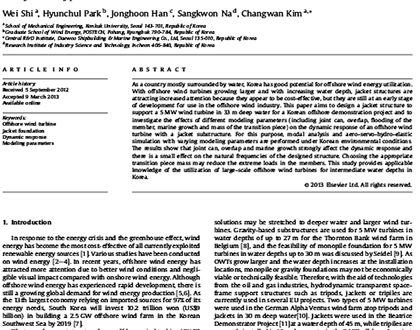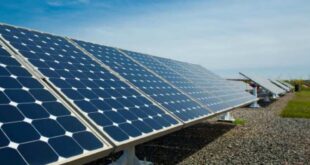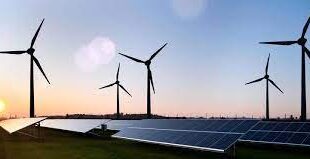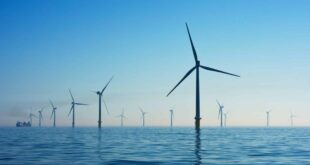In this work. a jacket structure was designed based on Korean Southwest Sea conditions to support a 5 MW OWT at a water depth of 33 m. In addition. the effects of different modeling parameters. including joint can. overlap. flooding the member. marine growth and TP mass. were investigated using an aero-servo-hydro-elastic simulation under Korean environmental conditions. This research provided applicable knowledge of the utilization of large-scale OWTs in Korea for intermediate water depths. The following conclusions were drawn. 1. Without joint can. the mass of the support structure was underestimated by 3.28%. A limited effect on natural frequencies was found. For extremes loads in the jacket. a joint can leads to increased extremes lying between 2.07% and 56.72%. The bending moment My was more sensitive to the joint can effect. 2. The mass of the support structure was overestimated by 10.73% because of overlap. Most of the loads were overestimated by between 2.33% and 25.61% for the overlap effect.
Key Words:
Wind turbine. The basis of the jacket. Dynamic response. Modeling Parameters
 Iran Energy News Oil, Gas, Petrochemical and Energy Field Specialized Channel
Iran Energy News Oil, Gas, Petrochemical and Energy Field Specialized Channel




